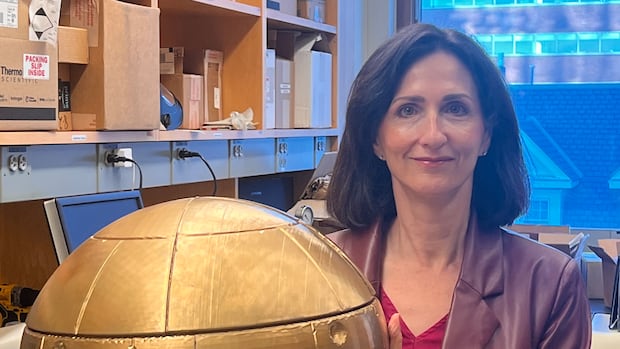#exoplanets
#exoplanets
[ follow ]
fromWIRED
2 weeks agoHow Do Astronomers Find Planets in Other Solar Systems?
Even the closest exoplanets are more than 4 light years away (36 trillion miles), which makes it doubtful that we'll ever visit one-so why bother? The reason is, it helps us answer an age-old question: Are we alone in the universe? As far as we understand, you need a planet to have life, and the race is on to locate one with Earth-like qualities.
Science
fromwww.scientificamerican.com
3 weeks agoCan We Image Alien Earths? This Newfound Object Could Show the Way
Astronomers have found what could become the first target for a crucial test of NASA's upcoming Nancy Grace Roman Space Telescope, a soon-to-launch observatory that serves as a pathfinder mission for discovering Earthlike worlds around other stars. In a pair of new studies, an international research team has revealed two newfound objects around nearby stars: a gas-giant exoplanet orbiting the star HIP 54515 and a brown dwarf around the star HIP 71618.
Science
fromwww.nature.com
2 months agoAstronomers Have Picked Their Favorite Exoplanets. Their Choices Might Surprise You
Thirty years ago this week, two Swiss astronomers announced that they had spotted the first known planet orbiting a Sun-like star. The Nobel-winning discovery, later published in the pages of Nature, was the culmination of centuries of dreaming, and decades of searching, for worlds beyond the Solar System. It was also the start of a whirlwind of discovery. Astronomers have since found more than 6,000 exoplanets, plus hints of thousands more.
Science
fromNature
2 months agoDeath of a star leaves an legacy for exoplanets
The elements formed from a star's demise shape the structure of the planets that rise from the ashes. What kinds of planet does a solar system cook up? It depends on the ingredients you throw in. Astronomers report that the planets that arise around a star can have a vast array of structures that depend on the elements swimming around that star.
Science
fromBig Think
3 months agoDavid Kipping on how the search for alien life is gaining credibility
Like many people in this field, I've been fascinated since I was a kid. I think I was five or six when my parents gave me this massive book with a black cover and pictures of the planets. It was like an atlas of the Solar System. I remember being mesmerized by Jupiter and its moons. I'd stare at the page and memorize the masses and radii, then rush outside with my little telescope to find Saturn or Jupiter.
Science
Science
fromwww.scientificamerican.com
3 months agoWant to Get Away? NASA Now Offers More Than 6,000 Alien Worlds to Daydream About
Confirmed exoplanet count has surpassed 6,000, reaching 6,007, with many newly confirmed rocky planets between Earth and Neptune identified by TESS, Kepler, and ground telescopes.
fromwww.scientificamerican.com
4 months agoNew Planet-Hunting Tools Seek out Alien Earths
Red dwarfs, or M dwarfs, are the most tempting places to seek alien Earths because they're the most abundant and enduring stars. They make up the majority of the stars in the Milky Way and shine with a slow thermonuclear simmer that should allow them to live exponentially longer than mosteven, say, for 14 trillion years, or 1,000 times the current age of the universe.
Science
fromMail Online
5 months agoScientists discover 'super-Earth' planet that might be habitable
"Finding a temperate planet in such a compact system makes this discovery particularly exciting. It highlights the remarkable diversity of exoplanetary systems and strengthens the case for studying potentially habitable worlds around low-mass stars."
Science
fromWIRED
5 months agoA Giant Planet and a Small Star Are Shaking Up Conventional Cosmological Theory
"This makes TOI-6894 the lowest mass star known to date to host such a planet," said Edward Bryant, Astrophysics Prize Fellow at the University of Warwick. "This discovery will be a cornerstone for understanding the extremes of giant planet formation."
Science
[ Load more ]

























